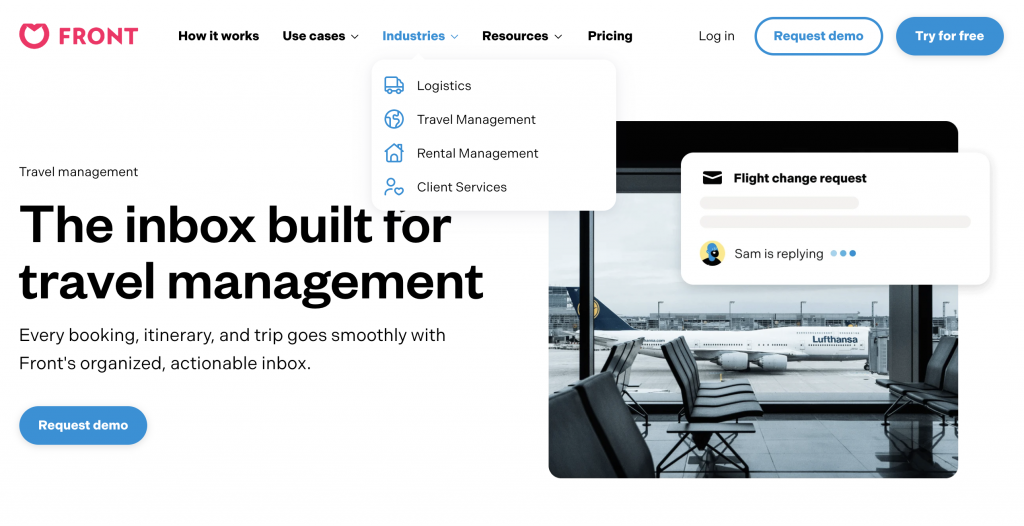
Nowadays in the internet it is pretty well known that you should validate your product before you even start building it. However, if the product already exists, then the market is already validated for you. Therefore you can consider yourself in a low risk position.
First and foremost, you don’t need to start educating people about why your products solves their pains. On the contrary, you can already see what features your competition boasts (and your clients are after) and design a roadmap with that in mind.
If the product already exists then much of the work is already “done for you”.
HOWEVER:
You’ll need SOMETHING to differentiate you.

For example, if you have an idea of building something that competes with Asana or Trello, why would clients choose you instead of them? They are well established, have lots of features, have lots of engineers and have lots of market research.
If your answer is that you are going to be cheaper, then I have bad news for you: That’s not a feature.
Besides, big SaaS products like Asana or Slack are really cheap for small and medium businesses (some business even get along well with the free plan).
There’s even more than that! If you start out by targeting low priced clients, chances are that you’ll get very low profit per clients, which will make very hard to run all the customer support that you’ll need to do. Jason Cohen of WP Engine talks more about that in this excellent talk
One thing is doing customer support for 10 clients paying $100 per month, and another much different one is doing customer support for 100 clients paying each $10 per month.
So when starting out you’ll want to target customers paying more than a bit more than the latter. A good ballpark to get started is creating three plans around $47, $97 and $249 each.
Tip: Also remember to offer some discount for users paying for the full year in advance, since that will dramatically affect your cash flow
But how can you justify that pricing, given that your competition is already better than you and maybe even cheaper than what you need when starting out?
Well, if you are in the case I just mentioned (i.e: you are tring to build a project management app) a good idea is to specialize in a specific vertical.
There is an excellent book on this topic Start Small, Stay Small by Rob Walling. You don’t have to stay small however. Once you’ve got a decent clientele you can always expand either horizontally or vertically.
Is specializing in a specific vertical the only strategy to get out of this situation? Of course not, but then you’ll need some creativity to come up with something new like a new interface or different approach to the problem which is out of the scope of this guide (maybe next ones!)
So… let’s make a brief rundown about what we have until now:
- You already have competition
- You want to charge enough to be able to provide excellent support to the customers that you are going to get
- An easy way to justify charging more when starting out is by being super specialized in a niche
Well, how do you get super specialized in a niche?
If you already belong to that niche, then great. You may already know most of the pains of the niche. Pick one of them, stop reading this guide and get started building your product.
If you don’t belong to that niche then:
- Pick a niche where you know the market already exists and narrow it even further
- Find and talk to people in that niche to find what they want
Advice for picking and narrowing in a niche
-Pick one where you know that there is a lot of money. For example, you know that the market for CRM’s exists: when deciding between building a CRM for Brokers to manage their clients or a CRM for photographers to manage theirs, I’d pick the first one.
-Pick one part of the niche that is close to where money comes in, instead of being close of where money comes out. For example, I believe it is much easier to sell a product related to lead generation, than to sell a product related to expense tracking.
Tip: many big players have menus in their websites that say SOLUTIONS, and then separate them by teams. You can easily pick only one of those teams and develop an even better solution just for them.
Sites that do this:
frontapp.com (the menu reads industries)

Advice for talking to people
You want to talk to people to understand on which of the features you’ll be focusing first.
Also, this step serves a double purpose, because it would be ideal that many of the people that you talk to now, later will become customers of yours if you really hear them and build the features that solves their problems.
So, should you start randomly messaging users on forums like reddit?
No, have at least something prepared. If not, the conversation will be too random and seem a little sleazy.
I advice you to have at least a landing page, and to build at least 2 or 3 things that will help your future customer.
What do I mean by things that will help your future customer?
Well, If you have a landing page where users can request access to the closed beta (which is not even built) it would be ideal if you had either:
- A really good guide on the subject that already provides value for your customers
- A small tool (nothing that takes more than 3 days to build) that also provides value for your customers.
For example, the Airbnb Listing Scraper I built would be an example of 2). Instead of fully building a product dedicated to market research for property owners and investors, I started by giving them a small product that allows them to gather data in an easy format.
Is it a super polished and sophisticated product? hell no. But, does it provide value? Yes, it does.
With that under your sleeve, you can much more easily start talking to people. You will be more confident and start providing value from the first moment.
An excellent way to know what to say and how is in the The Mom Test by Rob Fitzpatrick.
That book is one of the best books on product development that I’ve read in quite some time.
An important takeaway is that once you start pitching your product to someone before knowing what he or she really wants, it is very likely that he or she will respond in the way that less hurts your ego, by saying things like “oh that’s a great idea!”. Only to later find out (when you’ve already wasted months developing a solution) that they never were insterested.
Note: in his book Rob doesn’t talk about building 2 or 3 small things before talking to people. But I find it that people always like it when you close the conversation giving them something they can already extract value from.
Actionable Rundown
- Pick a niche that is already validated
- Narrow it down
- Build a landing page
- Create 2 or 3 things that provide value to your niche
- Talk to people about how they go about doing the process that you pretend to improve
- Only after hearing their response, ask if would like to be kept in the loop for the solution you are creating
- Close the conversation by saying, “meanwhile I’ve made these [link to your things you’ve built] that may help you, they are completely free, so hope you enjoy them! :)”
If you’ve gotten a good response from at least 20-25 people, then you are good to go. You can start developing your solution.
If you haven’t, then pivot. You haven’t lost months building a solution that no one wants. Instead you’ve spent around 10 days understanding what people really want.
Love this article! Thanks for sharing Mike.
From my personal experience, the most difficult part is to cut scope so much that you can ship something USEFUL in just 3 days.
Came here from hacker news. I Love the landing page validation concept. I built a tool called BurnerPage that does that – (builds a page, creates surveys and let’s you see user interest) You can try out a demo at https://BurnerPage.com
(And I did this as a solo founder, so the article is doubly relevant for me)
How do you feel about requesting an email for access to one or all of the free tools? Seems like an opportunity to at least build a launch list.
That’s a good idea!
Pingback: Tech roundup 116: a journal published by a bot - Javi López G.